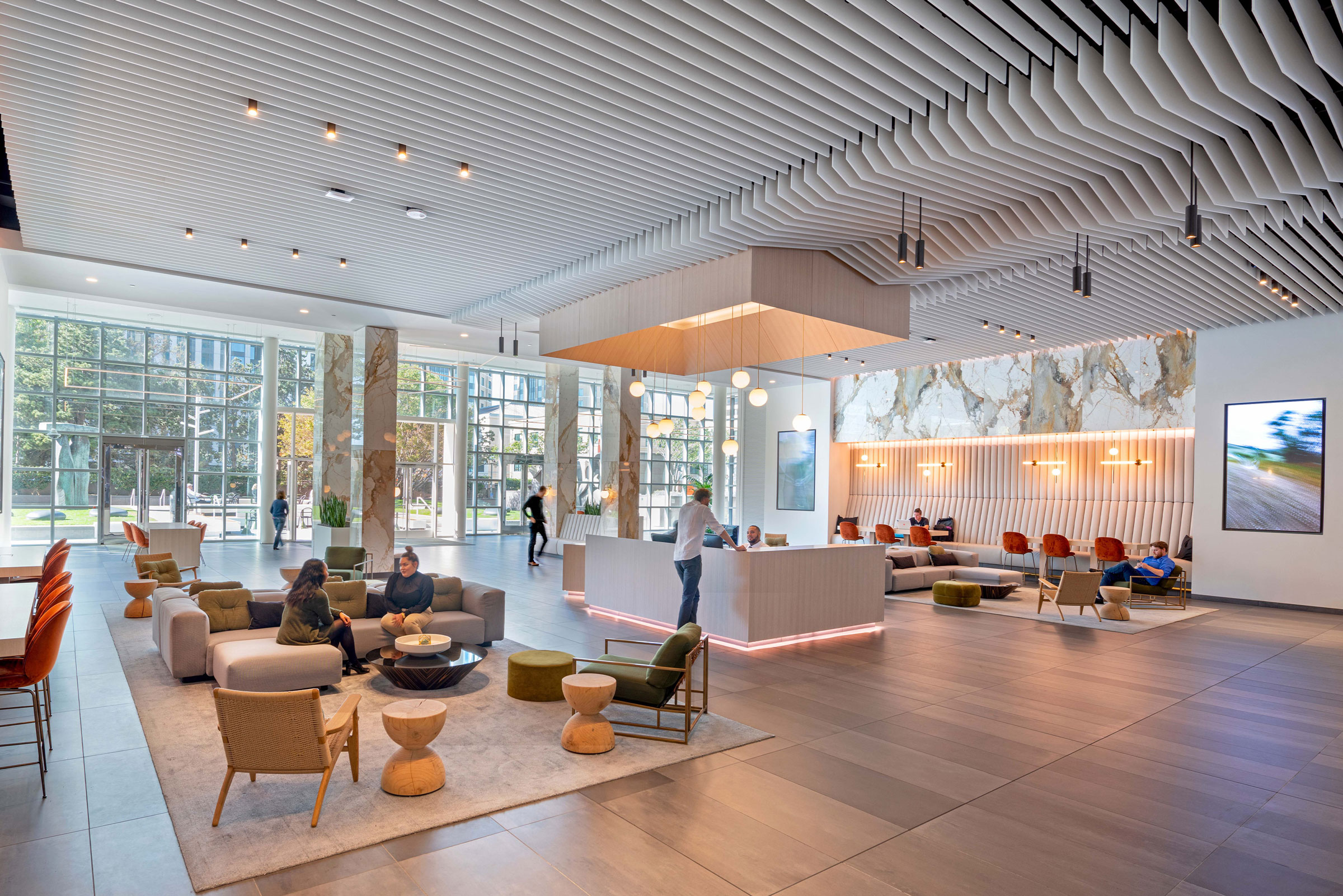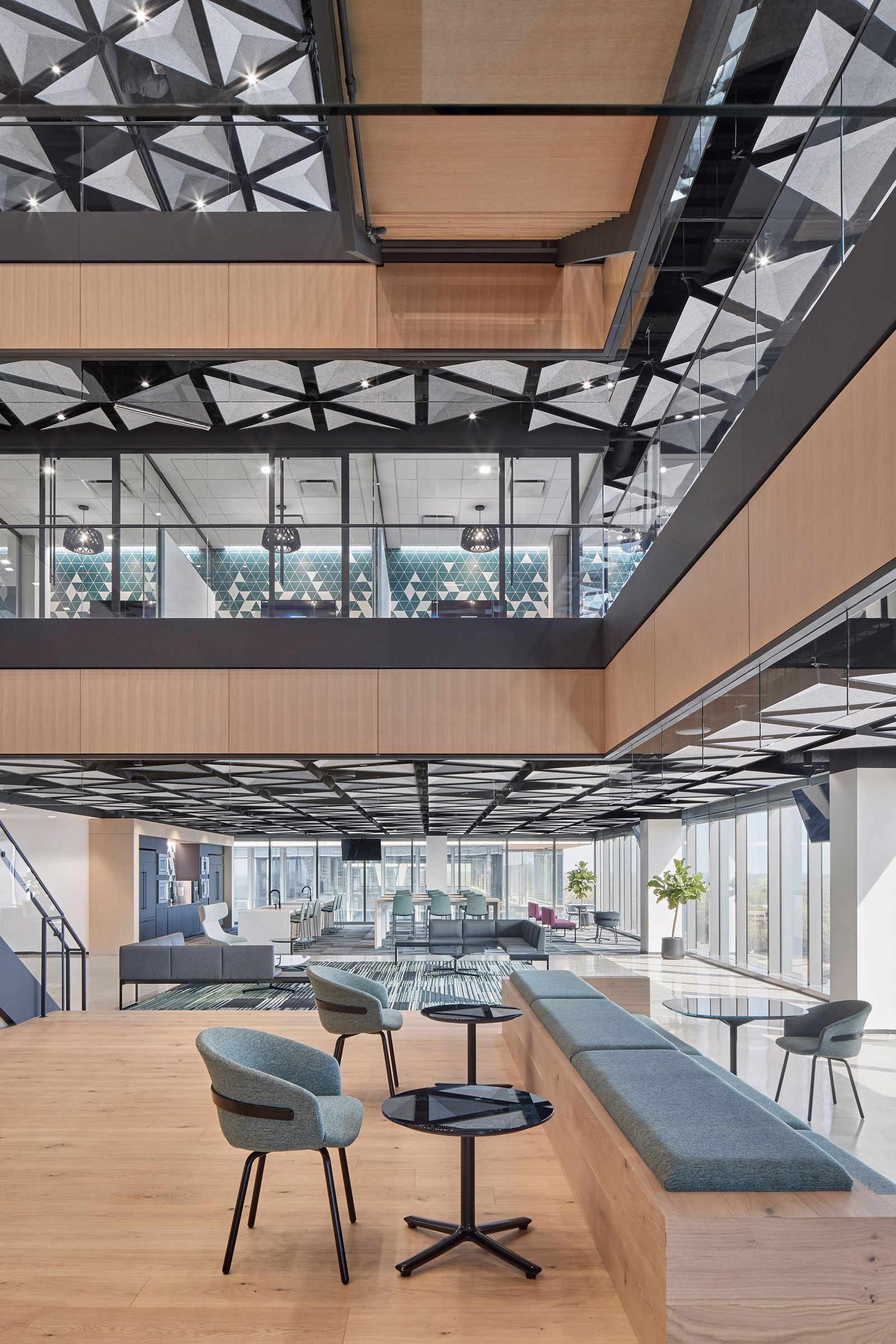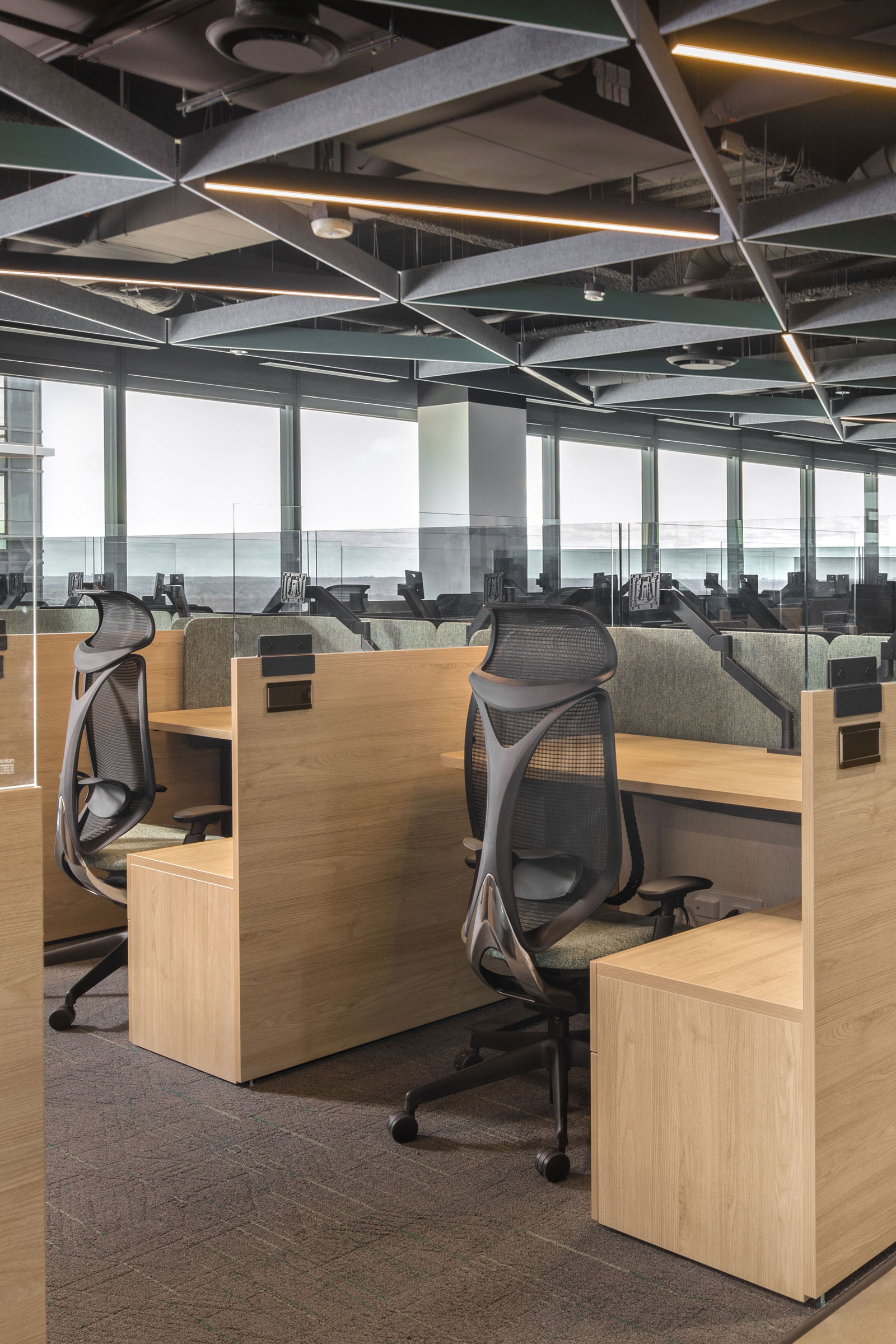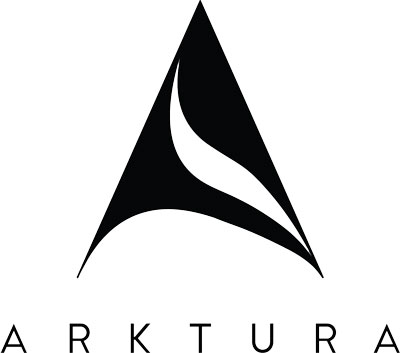Story at a glance:
- Consider key aspects of auditory wellness in overall design from the start.
- Absorb distracting noise with the right combination of building materials.
- Consider privacy in the open office.
By now we are aware of the importance of acoustic design in a commercial space—the dangers involved in a loud and distracting work environment and the effects that may have on employees. Sound attenuation is key, but when and where do you install these helpful modules? For projects under construction, for example, an entirely new building site, where does one begin?
Or perhaps this was an existing building in need of a total retrofit to fall in line with a company’s grand design. This blank canvas of commercial design is ripe with design potential, adding inviting furniture, fun color patterns to elicit creativity, and open office design to encourage collaboration. However, one crucial aspect is missing—acoustic comfort. When dealing with these blank slate scenarios, consider these key aspects to incorporating auditory wellness into the overall design.
The Necessity of Proper Acoustic Design
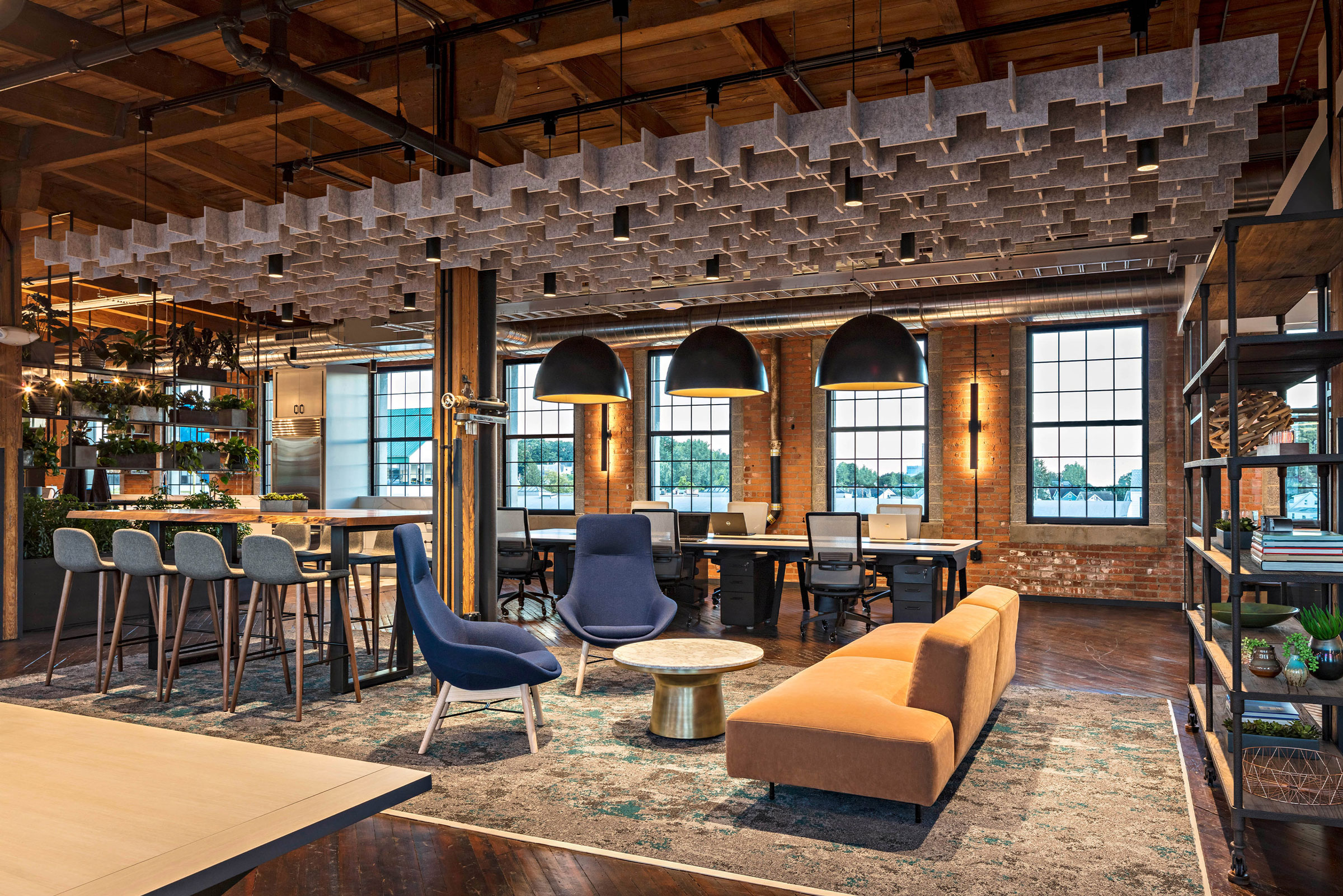
Sound attenuation is key in the hospitality industry, over areas with multiple tables and chairs, like at 50 Day Street in Norwalk, Connecticut, designed by CPG Architects. Photo by Richard Titus Photographics
Before diving into how acoustic products can create a more serene environment for your team members and customers, let’s look at what a commercial office can look like without the proper acoustics. Open office layouts that have become popular in the last couple of decades are great for collaborative work and quickly reaching teammates, but they can be a nightmare of sound collision without the proper acoustics.
If your new office space has lofty ceilings, all those various conversations travel upward and bounce back in every direction. This harsh noise makes it hard for others to concentrate and creates an overall unpleasant experience. Employees will be too busy and distracted by the noise to focus on work, and people may be so put off they might leave altogether.
Another concern with open office layouts is the lack of privacy. In commercial projects like offices and restaurants, it is paramount to establish partitioned spaces for conversing and meeting as it creates a sense of privacy. Having coworkers next to you with no visible division and a lack of acoustic dampening creates an atmosphere where everyone can hear your conversations.
Your office may have become susceptible to “open office fatigue” without clear and precise auditory intervention. Counter the spread of excess noise by taking steps to curb this fatigue.
Absorbing Excess Noise
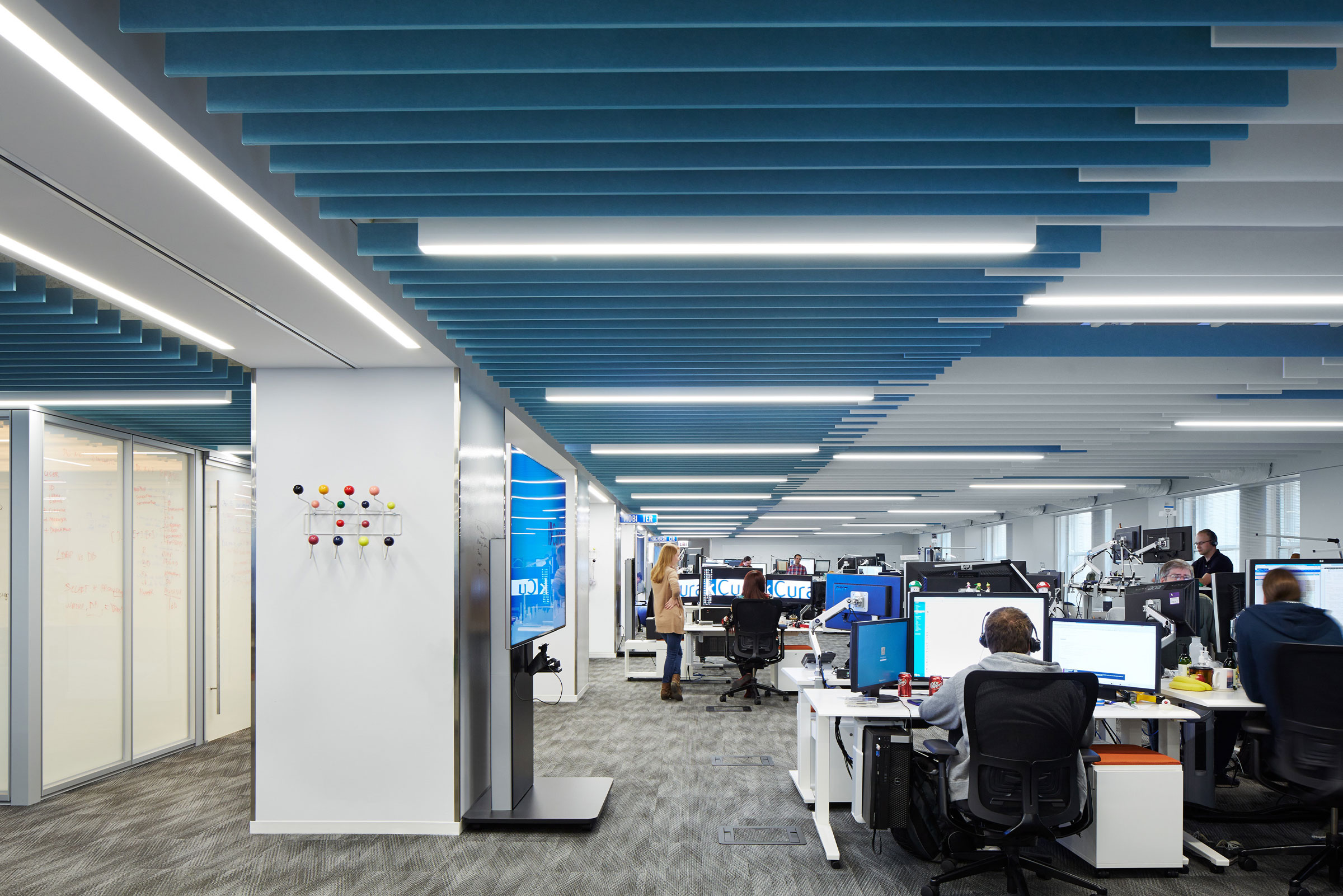
Arktura says open office layouts can and should be paired with acoustic baffles like the ones shown here at kCura in Chicago, designed by HOK, to absorb excess noise from below. Photo by Hedrich Blessing
The easiest and quickest way to absorb the excess noise produced in an empty building is to fill that building with things like furniture, carpeting, decor, and more. With office furniture like desks, chairs, filing cabinets, lounge, and breakout areas, more solid objects will catch and absorb the noise produced. Materials like woven carpets and fiberglass insulation absorb more noise than hardwood flooring and gypsum board ceilings.
But do you need to take acoustic comfort to the next level? To have a significant impact on the auditory comfort of the building’s inhabitants, you may want to install dedicated acoustic products such as baffles or clouds. When it comes to the world of architectural sound control, where does one start?
The World of Sound Attenuation
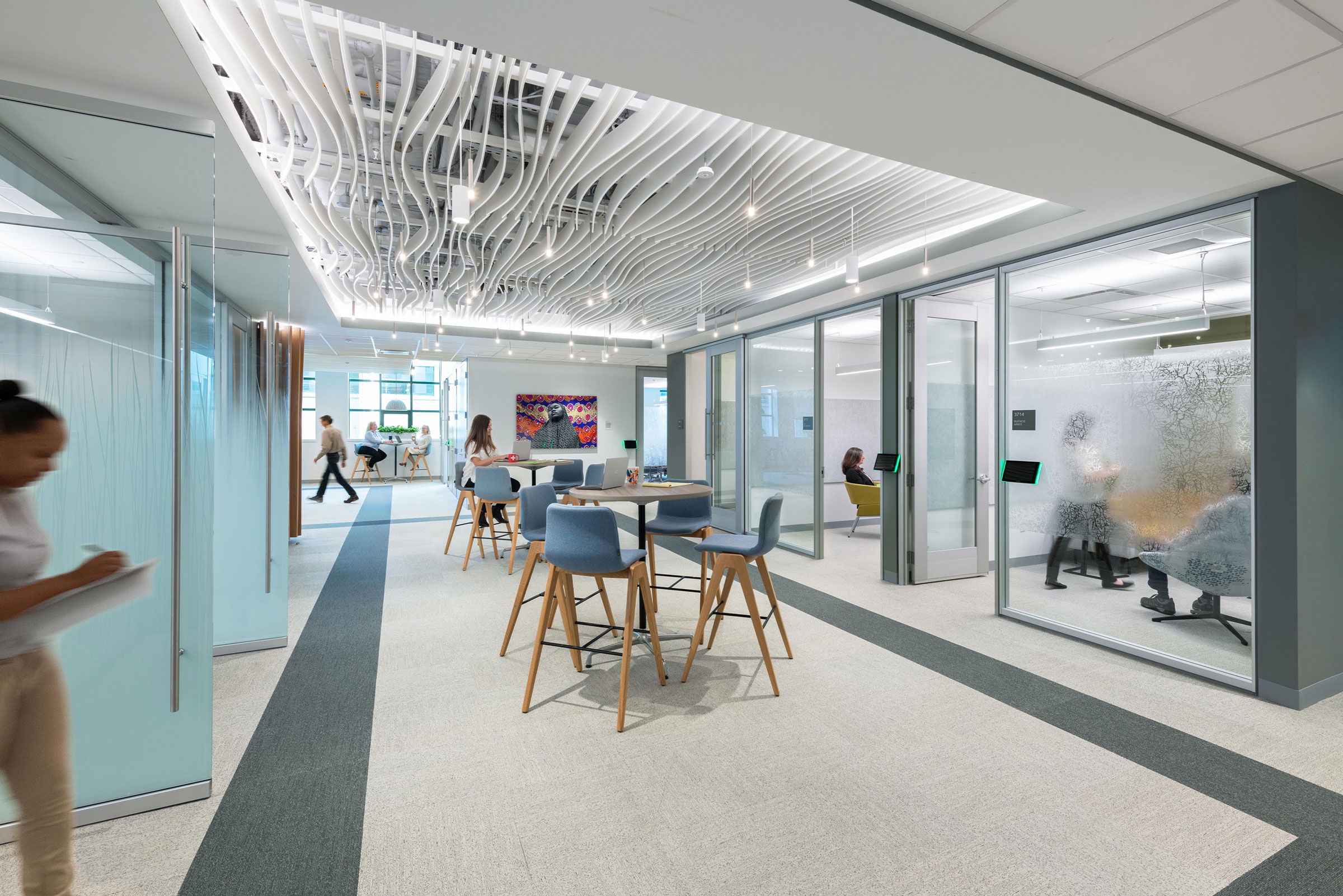
Acoustic baffles and clouds can be strategically installed above specific breakout areas for targeted sound control, like at this biotech organization designed by MDS Architects in Cambridge, Massachusetts. Photo by Chuck Choi
Simply put, it’s best to start by looking up. We have already covered the risks of open, high vaulted ceilings and what they can do to sound in a room. Installing acoustic products like baffles or acoustic clouds is the least intrusive form of sound attenuation you can install, as it does not affect the total square footage of a space. It is easiest to control sound dispersion and manipulation vertically from a purely auditory standpoint. A plethora of products are available for this—from a temporary, quick setup to a more fixed installation.
Most commonly when it comes to commercial ceilings—especially when controlling sound—the go-to solution was simple drop ceiling tiles. These cost-effective ceiling solutions have become an essential tool for value engineering in lieu of more dynamic options in the architectural space.
Baffles & Acoustic Clouds
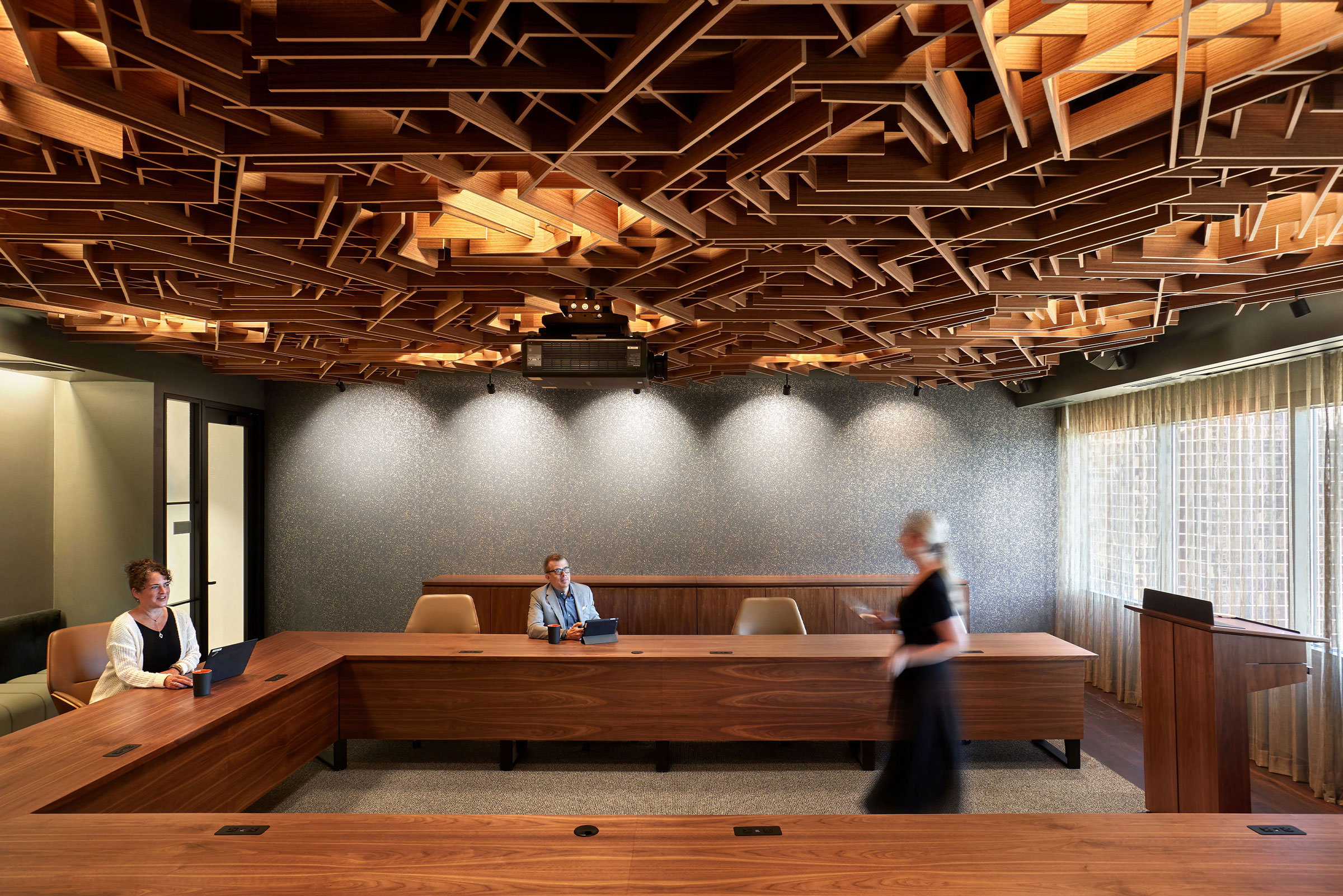
Intricate patterns create a motion-filled flow to bring a decorative element to a functional product at GitHub in Bellevue, Washington, designed by Interior Architects. Photo by Garrett Rowland
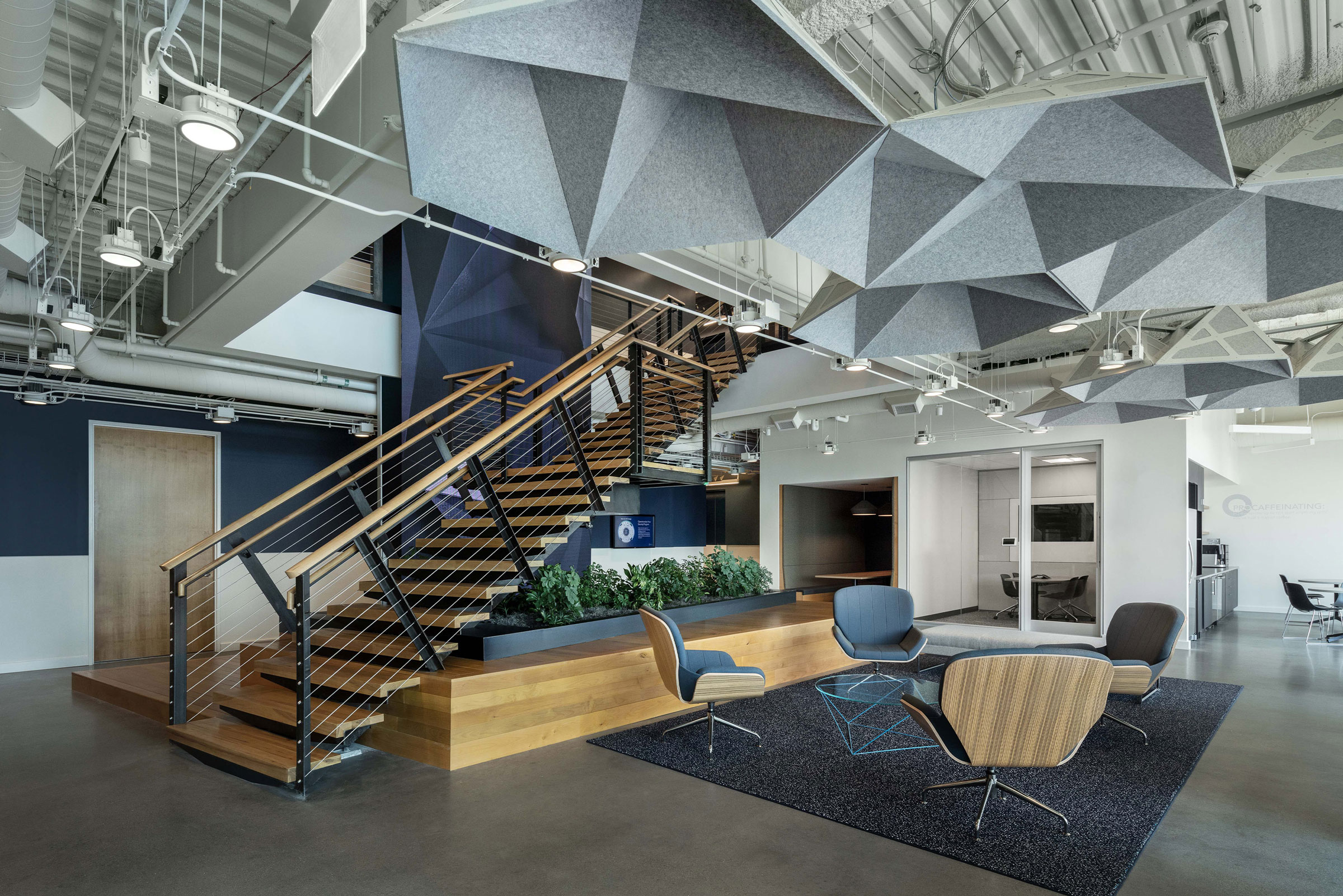
Acoustic clouds clustered over conversation spaces ensure sound doesn’t fill up the rest of the space at Optiv in Denver, designed by Interior Architects. Photo by James Florio
Arktura’s collection of acoustic ceiling options offers a diverse array of performative systems to achieve your design intent. Before getting into Arktura’s expansive offering, it’s critical to define the several types of acoustic ceiling products on the current market. The two most common types of ceiling-suspended products are acoustic baffles and clouds.
Baffles are usually linear in their form factor, wrapped or made entirely in sound-absorbing material. They are suspended vertically with wires connecting the tops of the baffle to the ceiling infrastructure or installed directly into the deck above. These can be aesthetically simple, straight-line baffles like in Arktura’s SoundBar® or create visual interest with intricate patterns of intersecting baffles like those found in the SoftGrid® Flux.
Acoustic clouds hang horizontally, covering a space like a cloud. These can be more intricate as they have more freedom regarding shapes, depth, and configurations. Supporting more installation points, they have sound-absorbing material on their downward-facing side and are suspended from their tops. Arktura’s SoundStar® is a versatile, geometric cloud that can work in tandem with multiple modules to cover an entire area or work suspended over crucial spaces such as meeting rooms or lobbies.
Acoustic Alternatives for Ceilings
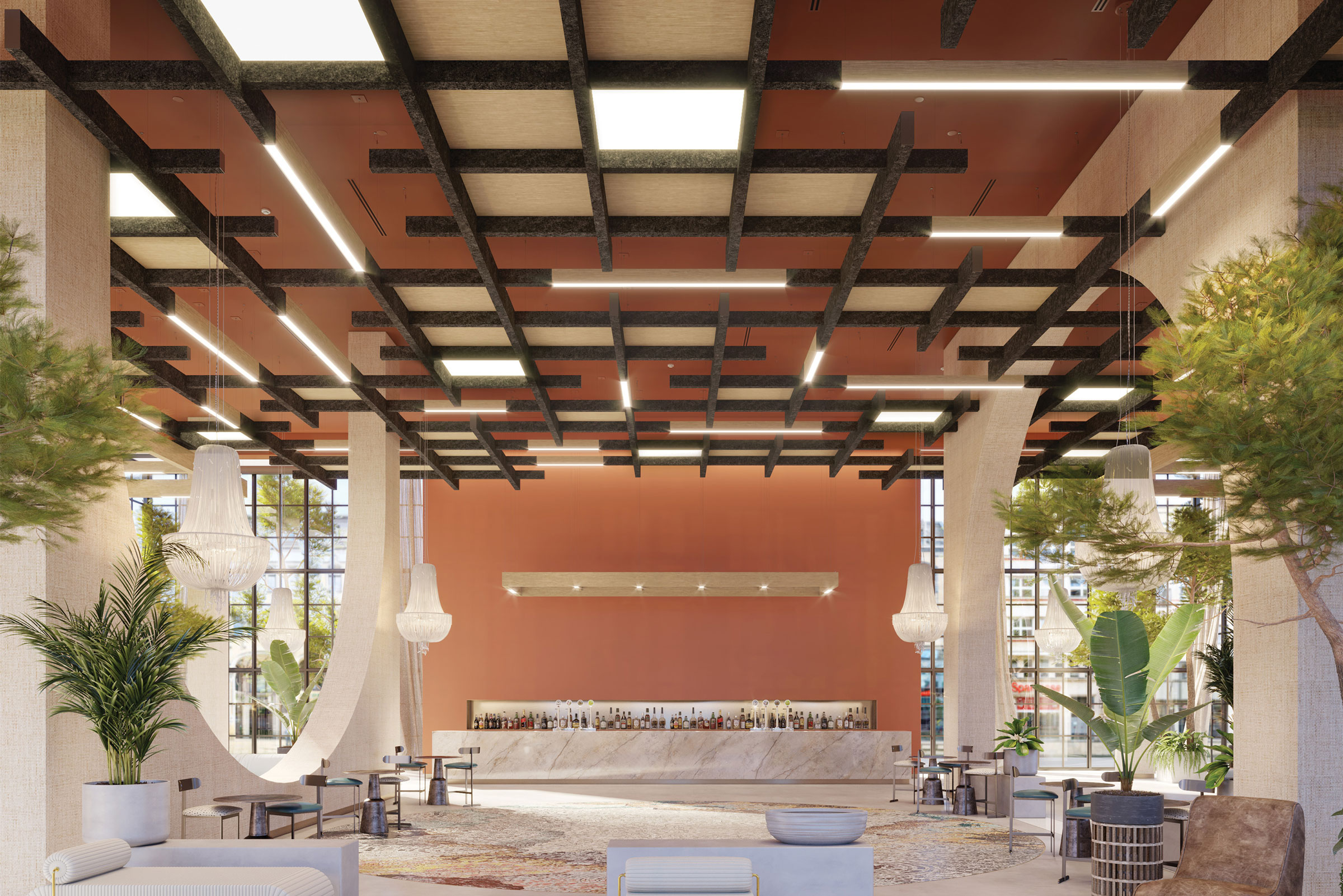
Recessed space in your ceiling can help with sound attenuation. This combination of linear baffles, quadratic baffles, and lighting absorbs excess noise. Photo courtesy of Arktura
You can also retrofit your existing ceiling with coffered ceilings for a more permanent soundproofing solution. These create recessed spaces above that absorb excess noise. Arktura’s SoftSpan® system of innovative acoustic baffles delivers the look of coffered ceilings or large timber trellises without the weight, all while reducing the impact of noise across any interior space.
Regardless of the shape and configuration your new acoustic treatment takes, the material is more important than the form factor. A lot of acoustic treatments on the market are made from comparable Polyethylene Terephthalate (PET), a recycled material that provides excellent sound-absorbing properties and is environmentally friendly.
From the Ceilings to the Walls
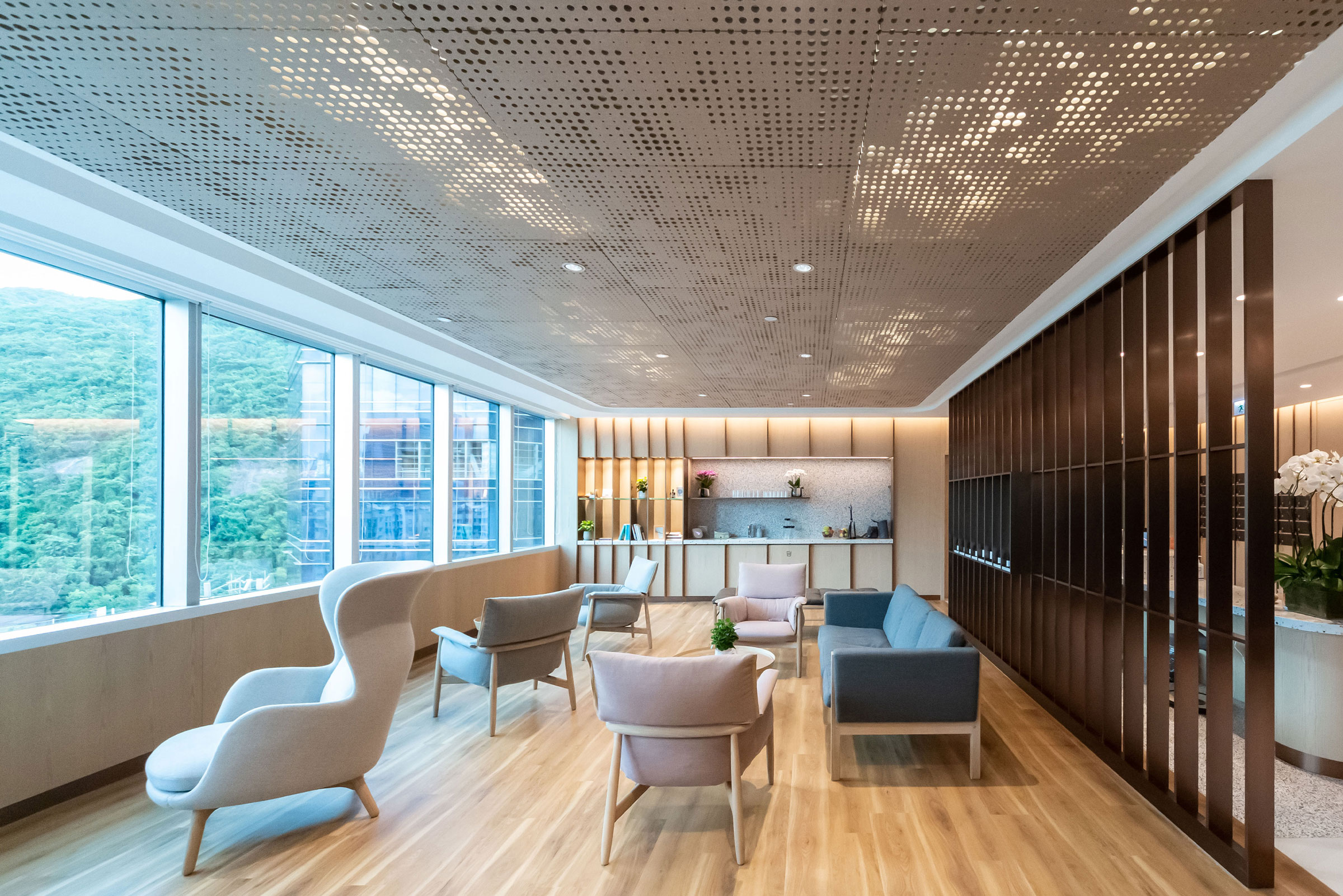
Perforated ceiling panels with integrated acoustic backers or lighting create a serene space without the need for high ceilings at this meditation center in Hong Kong designed by M Moser Associates. Photo courtesy of Moser Associates
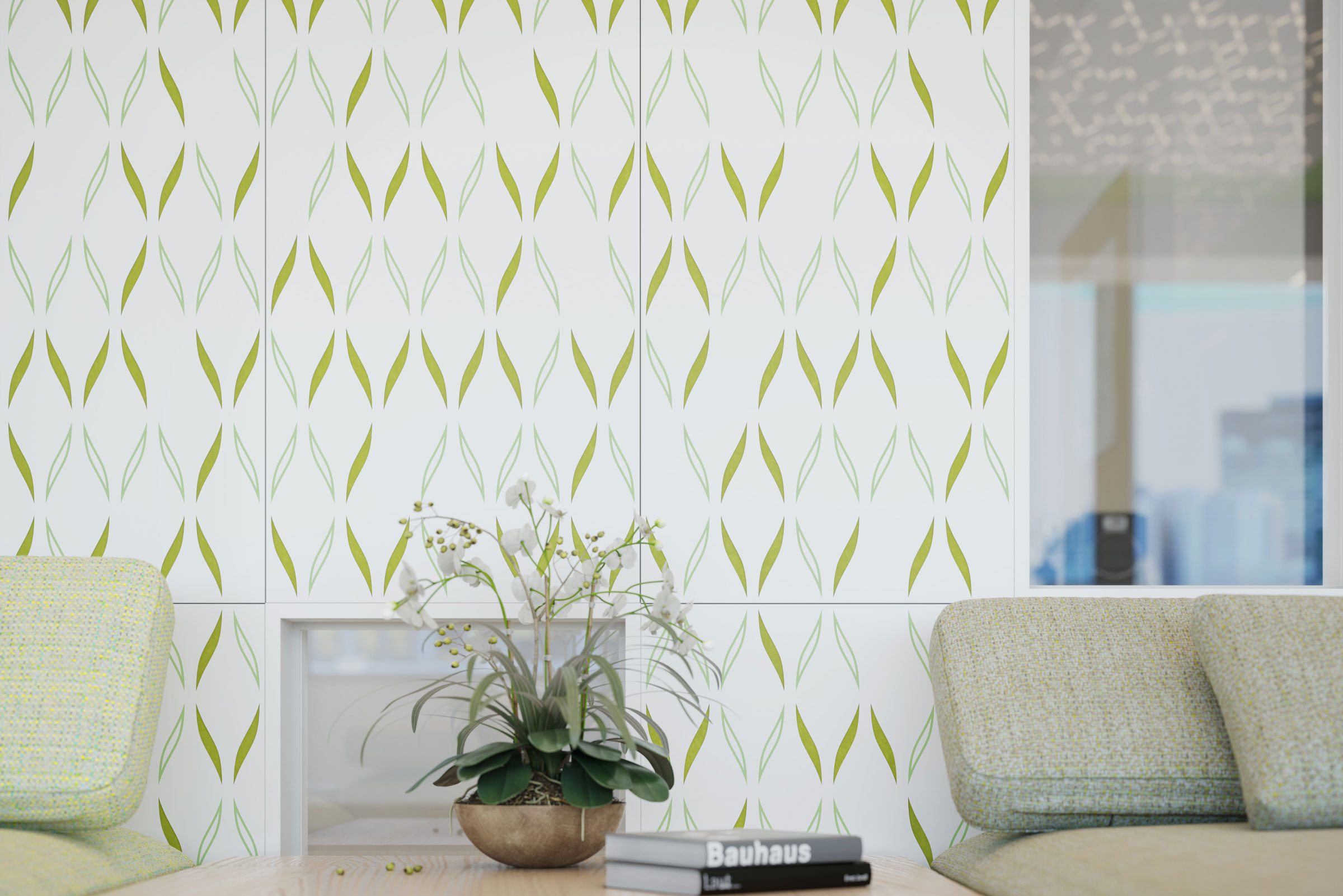
Integrate acoustic support into your walls with Soft Sound backers in Arktura’s line of decorative wall panels. Photo courtesy of Arktura
If your new commercial space does not have soaring ceilings to disperse acoustic baffles, acoustic ceiling panels are another cost-effective option. There are dynamic, innovative, and performative variations from the commonly used drop ceiling and torsion spring grid that provide both decor and function.
Perforated aluminum panels with artistic designs can feature an additional acoustic backer made of Arktura’s Soft Sound® material. Panels like VaporSoft® are easy to install and provide stunning focal points and practical acoustic support with the optional backer. Panels seamlessly transition from ceiling to wall, taking acoustic control down from the ceilings and out to the rest of your space.
Now that your commercial retrofit project has enough furniture, textile decor to absorb sound, and ceiling suspended acoustic modules, it’s time to look at the walls around you. Stop excess noise from reaching above by installing acoustic panels on your walls or as vertical surfaces. Thanks to its easy install, Vertika® channel system with VaporHue™ Stitch, with optional Soft Sound® acoustical backer, it’s possible to have decorative walls with integrated function.
Partitions: For Privacy and Flexibility
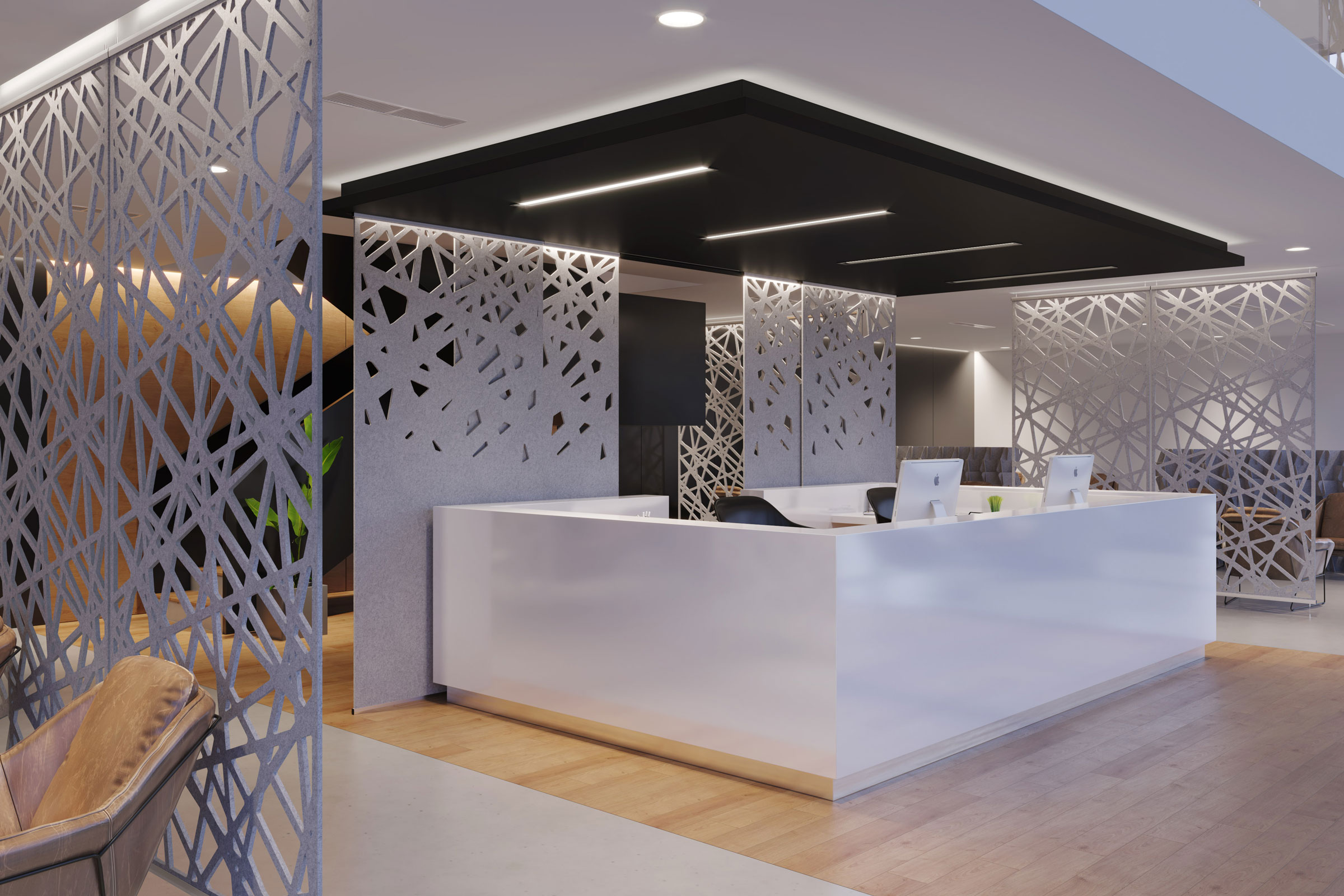
Acoustic dividers not only provide sound control, but they can help with privacy concerns for any temporary or permanent installation. Photo courtesy of Arktura
Combatting open office fatigue can be as simple as adding temporary, movable, or even half-filled acoustic partitions. Partitions make it easy to divide and define spaces, create calm semi-enclosed spaces that limit direct air currents, and provide comfort, privacy, and safety tools. These reduce the impact of noise through both their flexible designs and their high-performance Soft Sound® acoustic material construction.
Divider options like SoftScreen® Trace create a sense of separation, while the perforated pattern offered in both full and half designs allows a space to still feel open. Additional mounting options like hanging brackets, cable hung, sliding track, and direct mounting methods allow for flexibility to fit the needs of your new building or retrofit project.
Case Study: NEUSTAR
- TriSoft geometric acoustic modules on all three levels of this commercial space bring a cohesive look to an overall project. Photo by Jenn Verrier
- Linear baffles like these SoundEdge systems over a busy desk area can mitigate excess noise, leading to a more pleasant work environment at Neustar, designed by HKS, in Reston, Virginia. Photo by Garrett Rowland
With this information on acoustics and design, Arktura helped guide DC-based architects in one of their latest projects—the award-winning, wellness-oriented headquarters for Neustar, a telecommunications technology company in the DC Metro Area. Winner of the 2022 CISCA (Ceilings and Interior Systems Construction Association) Construction Excellence award, this project began its life as an anchor tenant at a new, transit-oriented, mixed-use development. This new construction spanned 90,000 square feet of corporate office space over three stories, with an interconnecting staircase bridging the project together.
Neustar was outfitted with three Arktura systems. Two acoustic systems (TriSoft® and SoundEdge®) were utilized to enhance acoustic performance, while a visually striking torsion spring panel system with backlighting (Vapor® Pixel + Arktura Backlighting) provided illumination.
Overall the project surpassed expectations. “[It’s] the embodiment of Neustar’s mission in built space, showcasing their brand identity through built space in a world class headquarters space. Arktura made the space. The ceiling plane defines the project and helps give it its identity,” says HKS architect Nathan Ferrance.
This massive project perfectly illustrates the way Arktura approaches the challenge of outfitting a large, open space with proper sound attenuation.
The Right Combination of Materials
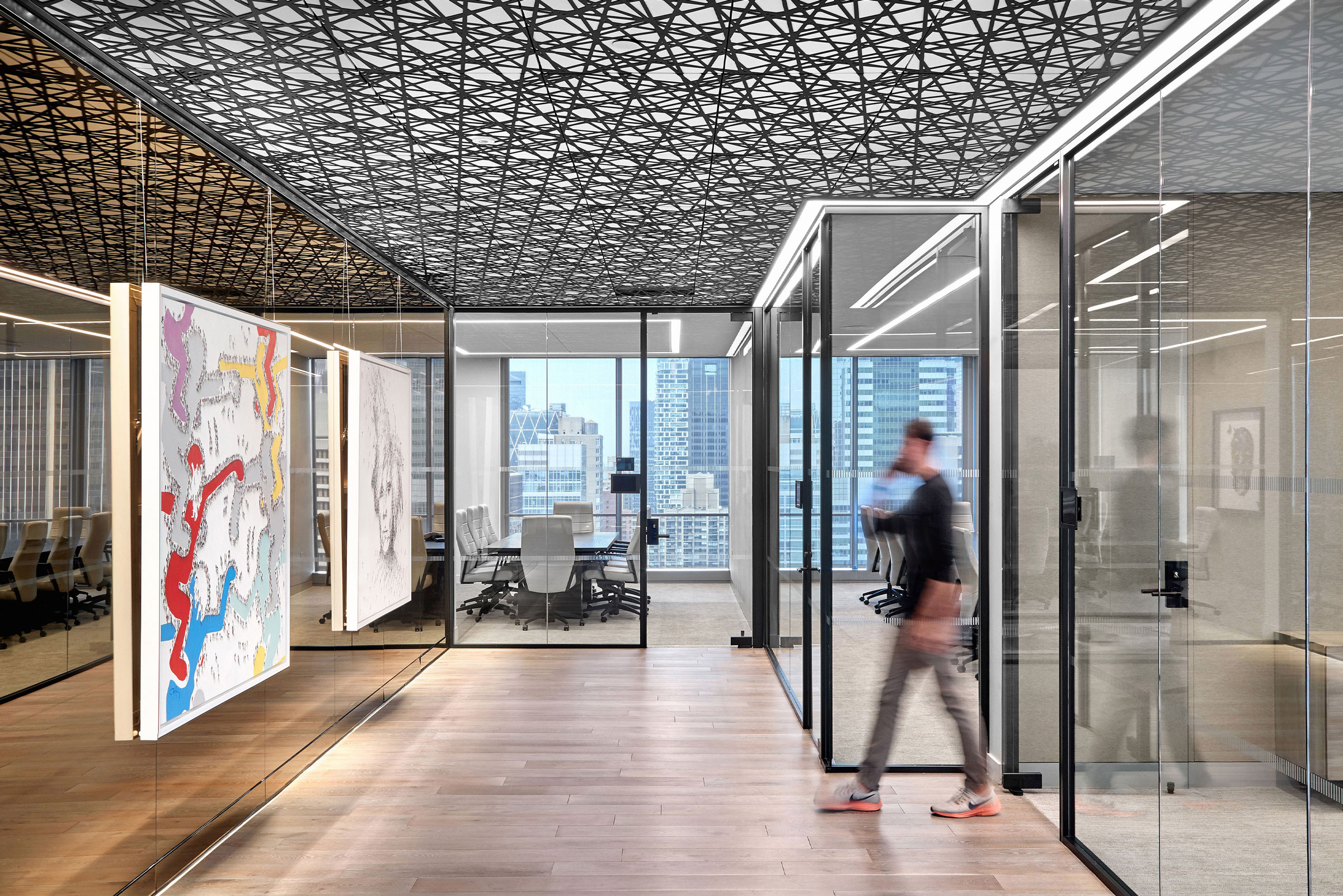
Arktura ceiling panels can be further customized with Soft Sound acoustic backers or lighting options, seen here at Ducera in NYC, designed by Ted Moudis Associates. Photo by Garrett Rowland
With the right building materials, everyday items like furniture, and specific acoustic products to integrate into your building (baffles, wall panels, partitions, etc.) into any space regardless of size can be outfitted with acoustic bliss throughout. These steps are crucial to maintaining occupants in your retail or office space, keeping things productive, and creating an environment that is distraction-free and without excess noise.

